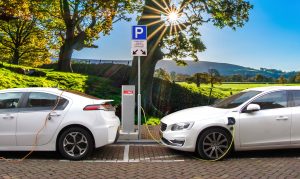Electrifying global transportation systems is essential in meeting global emission reduction targets in the pursuit of mitigating the effects of human induced climate change. In a sector that is responsible for almost a quarter of global GHG emissions, there has been a global push towards vehicular electrification in recent years. The global electric fleet numbered 5.1 million in 2018, a 63% increase from the year before, with similar year on year growth of 57% and 60% in 2017 and 2016 respectively. There are currently 3 main types of electric vehicles in the market: Battery Electric Vehicles (BEV), Plug-in Hybrid Electric Vehicles (PHEV) and Fuel Cell Electric Vehicles (FCEV). BEVs are the most popular type of EV on the roads today, accounting for 64% of the world’s electric car fleet, closely followed by PHEVs. Having said that, BEVs still suffer from range limitations and long refuelling times and these keep it from completely replacing conventional ICE vehicles today and prevent BEVs from being suitable for high utilisation rate and heavy duty vehicle segments.
Range anxiety is preventing widespread adoption of EVs
“Range anxiety” is a term that has been used frequently by owners of BEVs and it implies the fear that a vehicle has insufficient range and would thus leave the vehicle’s occupants stranded. Although the number of charging points have increased significantly over the years, they are still not nearly as commonplace as fuelling stations for standard ICE vehicles. This situation gets worse for long distance travel as most charging points available globally today are available mostly in cities with very few points located along highways and other long-distance vehicular routes. Even if and when battery costs come down, range anxiety will limit the ability of a BEV to be used in specific applications unless substantial investments are made to ensure the availability of sufficient charging points.
High charging times make high utilisation rates unfeasible and makes BEVs unsuitable for certain applications
The time taken to charge an electric car under current technology is anywhere from 30 minutes up to 12 hours depending on the speed of the charging point and size of the vehicle’s battery. This is significantly longer than the time it takes to fill up the tank of a conventional ICE vehicle (a few minutes). Even with the latest fast charging technology, charging times are still not comparable to refuelling times of ICE vehicles. Furthermore, fast-chargers are few in number and available only in selected locations and for certain types and brands of vehicles and thus not universally available to all BEV owners. This makes charging BEVs in the middle of a trip a very time-consuming process and not feasible to everyone and most people prefer to charge their vehicles either at home overnight or while at the office to take advantage of vehicular downtime. This sets a lot of limitations of the utilisation rates and range of BEVs and is another reason why these vehicles are not viable for a lot of various types of applications that vehicles in general have to fulfil.
FCEVs can fill in where battery power suffers from limitations
From the above examples it is evident that BEVs still suffer from limitations that preclude them from being used for high utilisation long distance applications. This is where FCEVs can fill in the gaps left by BEVs. The figure below illustrates this fact and shows the suitability of various types of green vehicle drivetrains to the various transportation segments.
FCEVs are a type of EV that uses a fuel cell instead of a battery, or works in parallel with a battery to power its on-board electric motor. These vehicles have refuelling times and driving ranges similar to ICE vehicles. This makes FCEVs ideal for high-duty cycle segments such as trains, ferries, utilitarian vehicles such as forklifts and long-distance and high utilisation rate trucks and buses. In fact, FCEVs are already having a significant impact in the forklift market, where it is already a commercial solution. There are thousands of FCEV forklifts deployed across warehouses across the United States for large conglomerates. Compared to battery power, fuel cells allows the operators of these forklifts to increase the utilisation rates, reduce labour cost as no battery swapping is required and reduce the overall space required (no space required for battery storage).

FCEVs can be the answer, but there is a catch
In the broader context of the energy transition hydrogen should be considered complementary to BEVs as BEVs do have clear competitive advantages in some vehicular segments (urban mobility, small cars). With the inclusion of FCEVs along with BEVs, the global vehicular fleet has the potential to be fully electrified and decarbonised. Having said this, it should be noted that 95% of hydrogen today is still sourced from fossil fuels and as a result, FCEVs cannot be truly emission free vehicles over their entire life-cycle until green hydrogen becomes widely adopted, which is expected to happen within the next few years.


